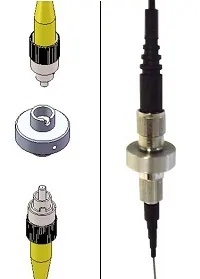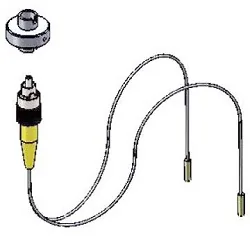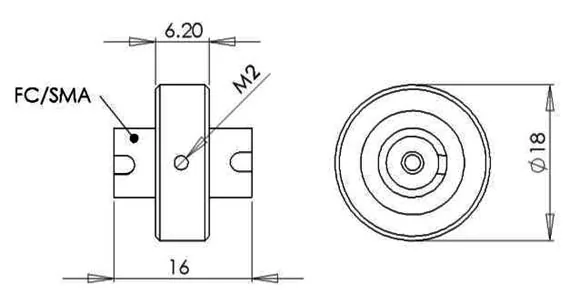Introduction |
||||||||||||||||||||||||||||
|
The fiber optic Rotary Joint (fiber optic commutator) enables optogenetics experiments with freely moving animals. Fiber optic commutator allows free movement of animal and fiber optic cables with a minimum of torque while maintaining excellent light transmission. High NA, large core polymer (POF) fibers of 1500um - 500um are coupled to Prizmatix Optogenetics-LED or to Ultra-High-Power (UHP) LEDs at one end and attached to the Rotary Joint at the other. Small core fibers of 500um - 200um are coupled to the other side of the Rotary Joint, while connected to the free-moving animal during optogentics experiments. The concept of Ultra High Power LED light delivery from thick to thin core fibers enables the use of several thin fibers simultaneously, for example to deliver light to both brain hemispheres simultaneously without loss of power at cannula tip.
|

|
|||||||||||||||||||||||||||

|
|
|||||||||||||||||||||||||||
Key Features:
|
How to connect fibers to the Rotary Joint |
|||||||||||||||||||||||||||
Applications:
|
||||||||||||||||||||||||||||
Specifications: |
||||||||||||||||||||||||||||
|
||||||||||||||||||||||||||||
Additional informationThe Prizmatix Rotary Joint was especially designed for working with high NA fibers and LED light sources. Unlike Lasers, Prizmatix Ultra High Power LEDs have a high brightness and large light emitting area. This characteristic is used to couple the LED's light efficiently into a high numerical aperture (NA ≥ 0.5), large core fiber such as 1000um – 1500um core. Due to the wide aperture of this fiber, coupling a secondary fiber (NA ≥ 0.5) with smaller core, such as 500um, does not require precise axial alignment. Placing the small core in front of the larger core fiber enables efficient light coupling. The primary fiber is connected to the top port of the fiber optic commutator and the secondary fiber is connected to the lower half. The Rotary Joint contains special low-friction ball bearings which enables the two fibers to rotate freely upon each other. Although the core diameter of the fiber optic components are reduced, If the high NA (Numerical Aperture) is manintained the LED's brightness (usually measured in mW/mm2), is conserved along the fibe roptic path from the LED to the Rotary Joint, and eventually into the cannula. The large to small core coupling method allows for more than one secondary fiber to be attached using a single LED light source and without compromising the brightness. This is very useful for comprehensive research such as optogenetically manipulating two brain hemispheres or several locations simultaneously as on a picture above. Prizmatix Rotary Joint is a one element of Prizmatix's in-vivo Optogenetics Toolbox. |
||||||||||||||||||||||||||||
Mechanical Drawings |
||||||||||||||||||||||||||||

|
||||||||||||||||||||||||||||

